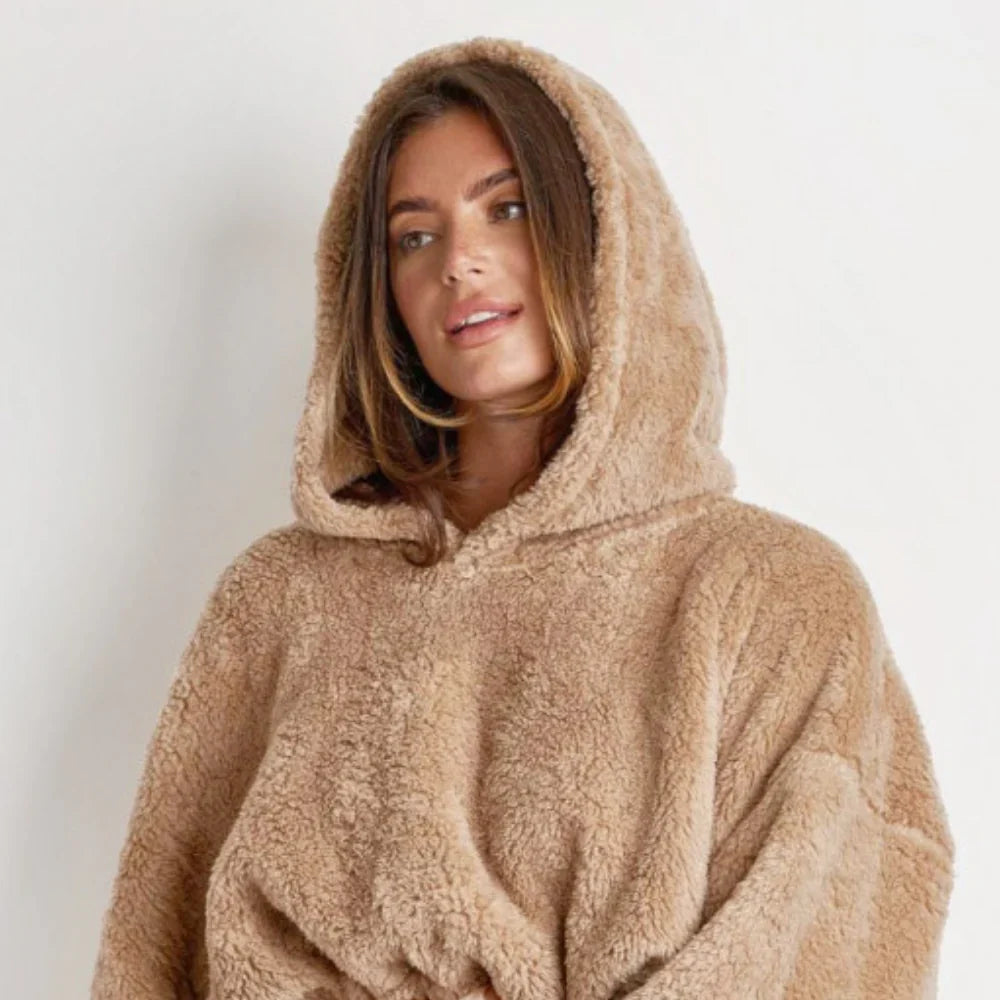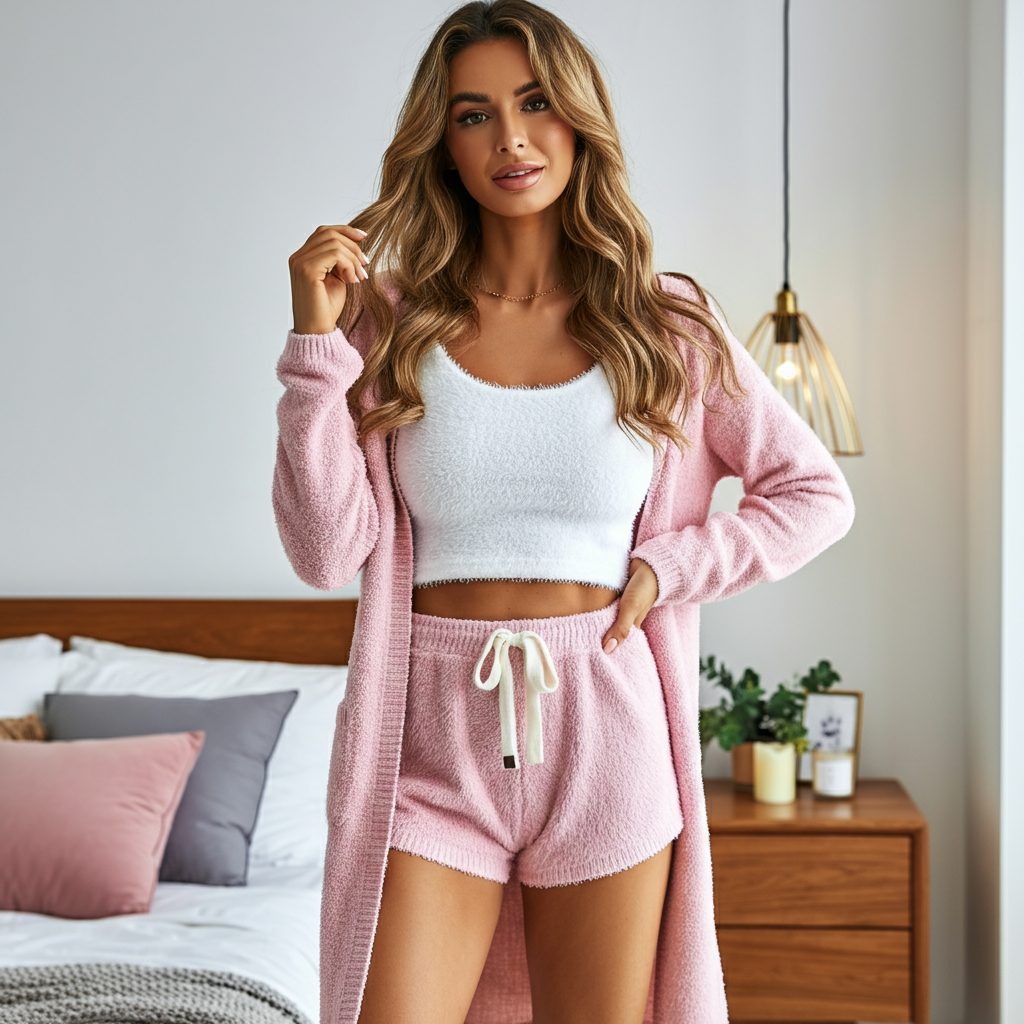
A Guide to Types of Pillow Cases
Share
That simple piece of fabric you rest your head on every night isn't just a decorative cover—it's your secret weapon for better sleep, healthier skin, and smoother hair. Stop treating it as an afterthought.
Choosing the wrong pillow case leads to immediate morning-after regrets: sleep lines that won't fade, frustrating hair breakage, and irritated skin. The right one, however, is a game-changer for your entire wellness routine, and the transformation can happen overnight.
Is Your Pillow Case Sabotaging Your Sleep?
Think of your pillow case as performance gear for sleep. You wouldn't run a marathon in flip-flops, so why are you sleeping on the wrong fabric? A cheap, scratchy material is like sleeping on sandpaper—it creates friction that tangles your hair and aggravates your face while you sleep.
This isn't just about comfort; it's about your health and beauty. Consumers are catching on fast, linking quality sleep and healthy skin directly to their bedding choices. This shift has ignited a huge demand for premium pillow cases designed to minimize friction, a trend confirmed by recent market research on pillowcase dynamics. Honestly, upgrading your pillow case is one of the easiest and most impactful changes you can make to your daily routine today.
Is your pillow case the missing piece in your wellness puzzle? Don't wait to find out. The right fit can unlock better sleep and a healthier appearance almost instantly.
Choosing the right fabric is your first and most critical step. Different materials deliver unique, powerful benefits. Understanding them is the key to making a smart, immediate investment in your well-being. For example, the powerful breathability of cotton is precisely why so many people refuse to sleep in anything but 100% cotton sleepwear.
Let's find the perfect upgrade for you.
Pillow Case Materials At a Glance
Overwhelmed by choices? Don't be. Use this table to immediately identify the best material to solve your biggest sleep problems.
| Material | Best For | Feel | Price Point |
|---|---|---|---|
| Cotton | All-around comfort and breathability | Crisp, soft, and familiar | $-$$ |
| Silk | Protecting hair and preventing wrinkles | Incredibly smooth and luxurious | $$$-$$$$ |
| Satin | A budget-friendly alternative to silk | Silky-smooth and slippery | $$ |
| Linen | Hot sleepers and a relaxed, natural aesthetic | Textured, airy, and soft | $$-$$$ |
| Bamboo | Eco-conscious and sensitive skin | Buttery-soft and cooling | $$-$$$ |
| Microfiber | Durability and budget-conscious buyers | Ultra-soft and smooth | $ |
This table is your shortcut. Now, let’s get into the details so you can make your choice with confidence and start sleeping better tonight.
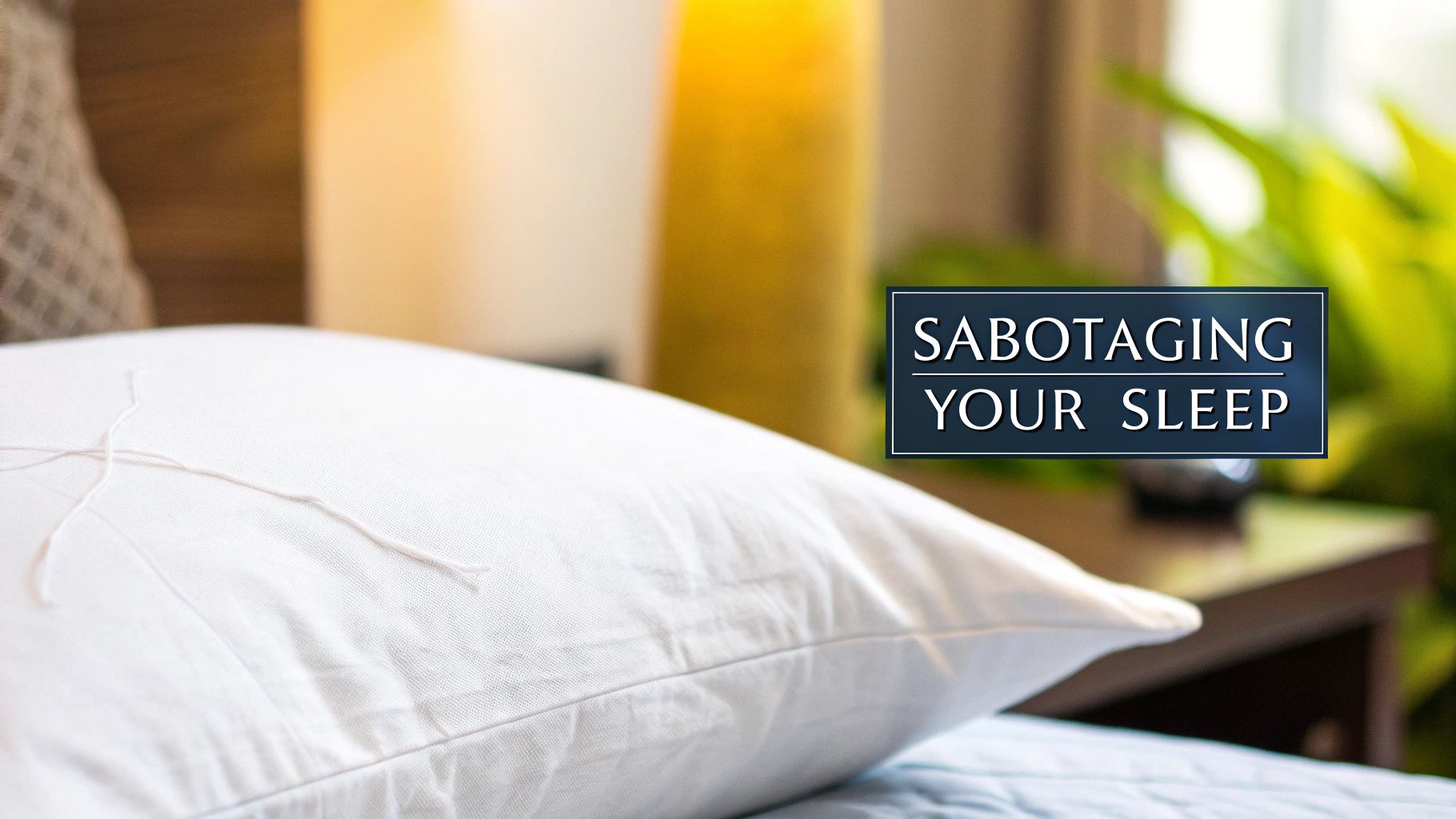
Exploring Popular Pillow Case Materials

You get it—the right pillow case is a non-negotiable upgrade. Let’s find the perfect material for you now. Each fabric has a distinct personality and feel, and picking the right one is your ticket to unlocking your best possible sleep.
It’s a massive industry, valued at around USD 3.4 billion globally. While budget options are everywhere, savvy consumers are investing in premium materials like silk and organic cotton. They know it's a direct investment in their skin health and a conscious environmental choice.
Cotton: The Timeless Classic
Let's start with the trusted champion: cotton. It’s the go-to for good reason. It’s breathable, soft, and feels instantly familiar, like your favorite worn-in t-shirt.
This natural fiber is a superstar at letting air circulate, wicking away moisture to keep you cool all night. If you're chasing that crisp, clean hotel-bed feeling, a high-quality cotton pillow case is a reliable, no-fuss choice that delivers immediate comfort.
Silk: The Beauty Sleep Secret
If your goal is to wake up with smoother hair and happier skin, silk is your ultimate upgrade. It creates a frictionless surface for your face and hair, allowing them to glide across the pillow all night.
This luxurious material immediately reduces the pulling and tugging that causes hair breakage, tangles, and those stubborn sleep creases on your skin. Because silk is a natural protein fiber and less absorbent than cotton, it won't steal your expensive skincare products or your skin's vital moisture. See what a difference it can make by exploring high-quality silk pillow cases today.
A silk pillow case isn't a luxury; it's a beauty tool that works for you all night long. Upgrading is the fastest, easiest way to care for your hair and skin while you sleep.
Satin: The Silky and Smart Alternative
Want the silky-smooth benefits without the premium price tag? Satin is your answer. It offers a nearly identical look and feel to silk, but it’s much friendlier on your wallet.
Here’s the crucial difference: satin is a weave, not a natural fiber. It’s usually made from synthetic materials like polyester, which gives it that signature glossy finish. Just like silk, a satin pillow case minimizes friction, making it a fantastic choice for preventing frizz and protecting delicate hairstyles.
Linen: The Effortlessly Cool Choice
Are you constantly flipping your pillow to find the cool side? Stop searching and switch to linen. This fabric is legendary for its incredible breathability and moisture-wicking power, making it an absolute dream for hot sleepers.
Linen has a unique, slightly textured feel that gets unbelievably soft with every wash. It’s also naturally hypoallergenic and antimicrobial. For those with easily irritated skin, choosing the right fabric is critical; our guide on the best fabrics for sensitive skin offers more essential advice.
The Nitty-Gritty: Weave, Thread Count, and Closures
Picking the right material is a great start, but the details are what separate a good pillow case from a great one. Don't overlook the weave, thread count, and closure—these are the elements that transform your bed into a sleep sanctuary.
Let's talk thread count. It’s often used as a marketing gimmick. A sky-high number means nothing if the fibers are cheap and scratchy. The real magic is in the quality of the yarn. A moderate count, like 300-500, made from high-quality, long-staple cotton is the sweet spot for a perfect blend of softness and durability.
Finding Your Perfect Feel in the Weave
Forget the numbers game for a second—the weave is what determines how the fabric actually feels against your skin. You'll mostly encounter two types: percale and sateen. Your choice here will completely define your sleep experience.
-
Percale Weave: Crave that crisp, cool feeling of luxury hotel sheets? Percale is your answer. Its simple one-thread-over, one-thread-under weave creates a lightweight and incredibly breathable fabric. If you sleep hot, this is a non-negotiable.
-
Sateen Weave: If you demand silky, smooth, buttery softness, sateen is for you. It uses a one-thread-under, three-or-four-threads-over pattern, exposing more of the thread's surface for a beautiful drape and an elegant sheen.
Securing Your Comfort: The Closure
Finally, consider how your pillow case closes. This isn't just a minor detail; it impacts the look of your bed and the protection of your pillow.
The right closure does more than keep your pillow from escaping. A zipper is your best defense against dust mites and allergens, actively protecting both you and your pillow.
An envelope closure uses an overlapping flap to tuck the pillow in, giving you a clean, seamless look perfect for a modern bedroom. For anyone serious about protection, a zipper closure is the ultimate choice, completely sealing the pillow inside. If you want a touch of classic elegance, the Oxford closure, with its decorative fabric border, adds a sophisticated, tailored finish.
Finding the Right Pillow Case for Your Needs
All this information is useless unless it helps you get a better night's sleep. The best pillowcase isn't about marketing hype—it's about solving your unique sleep challenges.
Let's cut to the chase. This is your personal pillowcase matchmaking guide. Zero in on your biggest sleep frustration, and you can instantly find your perfect solution.
For The Hot Sleeper
Are you the one constantly flipping your pillow, desperate for the cool side? If you wake up feeling overheated, your pillowcase is trapping heat right where you don't want it.
You need a fabric that breathes.
- Your Perfect Match: Linen or cotton percale.
- Why It Works: Linen is a natural temperature regulator, acting like a personal thermostat for your head. Percale's crisp, lightweight weave is just as effective, allowing air to circulate freely. Both materials excel at wicking away moisture, ensuring you stay cool, dry, and comfortable all night long.
For The Beauty Enthusiast
Tired of waking up with sleep creases and a bird's nest for hair? Standard cotton is surprisingly abrasive. It creates friction that tugs at your skin and frays your hair cuticles as you sleep.
- Your Perfect Match: Silk.
- Why It Works: Silk is the definition of smooth. Its nearly frictionless surface lets your hair and skin glide over it, preventing damage. This one simple switch can dramatically reduce hair breakage and prevent those morning "pillow face" wrinkles. Add a zipper closure to keep the pillow securely inside for maximum effect.
This visual breaks down the feel of the two most popular cotton weaves so you can choose wisely.
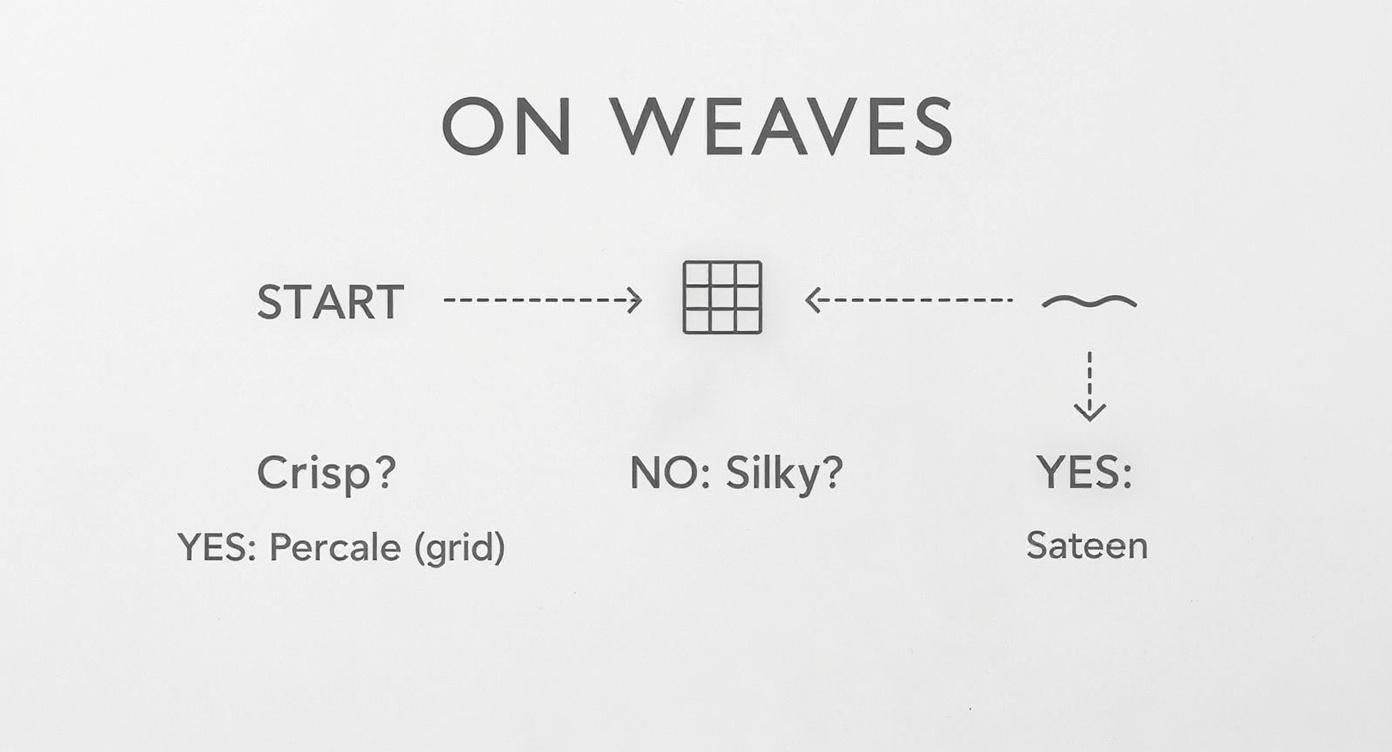
It comes down to this: if you want that crisp, cool hotel feel, choose percale. If you want softer, silky luxury, choose sateen.
For The Allergy Sufferer
Do you wake up stuffy, sneezing, or with irritated skin? The cause may be lurking in your pillow. Allergens like dust mites and pollen collect there, and your pillowcase is your first and most important line of defense.
- Your Perfect Match: Bamboo or a tightly woven cotton with a zipper closure.
- Why It Works: Bamboo is naturally antimicrobial and hypoallergenic, creating a hostile environment for allergens. A high-quality, tightly woven cotton like the one in the beautiful Canal Stripe Pillow Case also creates a powerful barrier. Combine it with a zipper closure to completely seal your pillow off from irritants.
Find Your Perfect Pillow Case Match
Still deciding? Use this cheat sheet to find your ideal match based on what you need most for a perfect night's sleep.
| Sleeper Type | Recommended Material | Key Benefit | Best Closure |
|---|---|---|---|
| The Hot Sleeper | Linen or Cotton Percale | Ultimate breathability and moisture-wicking | Envelope or Open End |
| The Beauty Enthusiast | Silk or Sateen | Reduces friction on hair and skin | Zipper or Envelope |
| The Allergy Sufferer | Bamboo or Tightly Woven Cotton | Naturally hypoallergenic and antimicrobial | Zipper |
| The Comfort Seeker | Cotton Sateen or Flannel | Buttery-soft feel or cozy warmth | Envelope or Flap |
| The Durability Fan | Cotton Percale or Linen | Gets softer and stronger with every wash | Envelope or Open End |
Don't settle for another night of mediocre sleep. The right pillowcase is a small change that delivers an immediate and huge return in comfort and rest.
How to Care for Your Pillow Cases
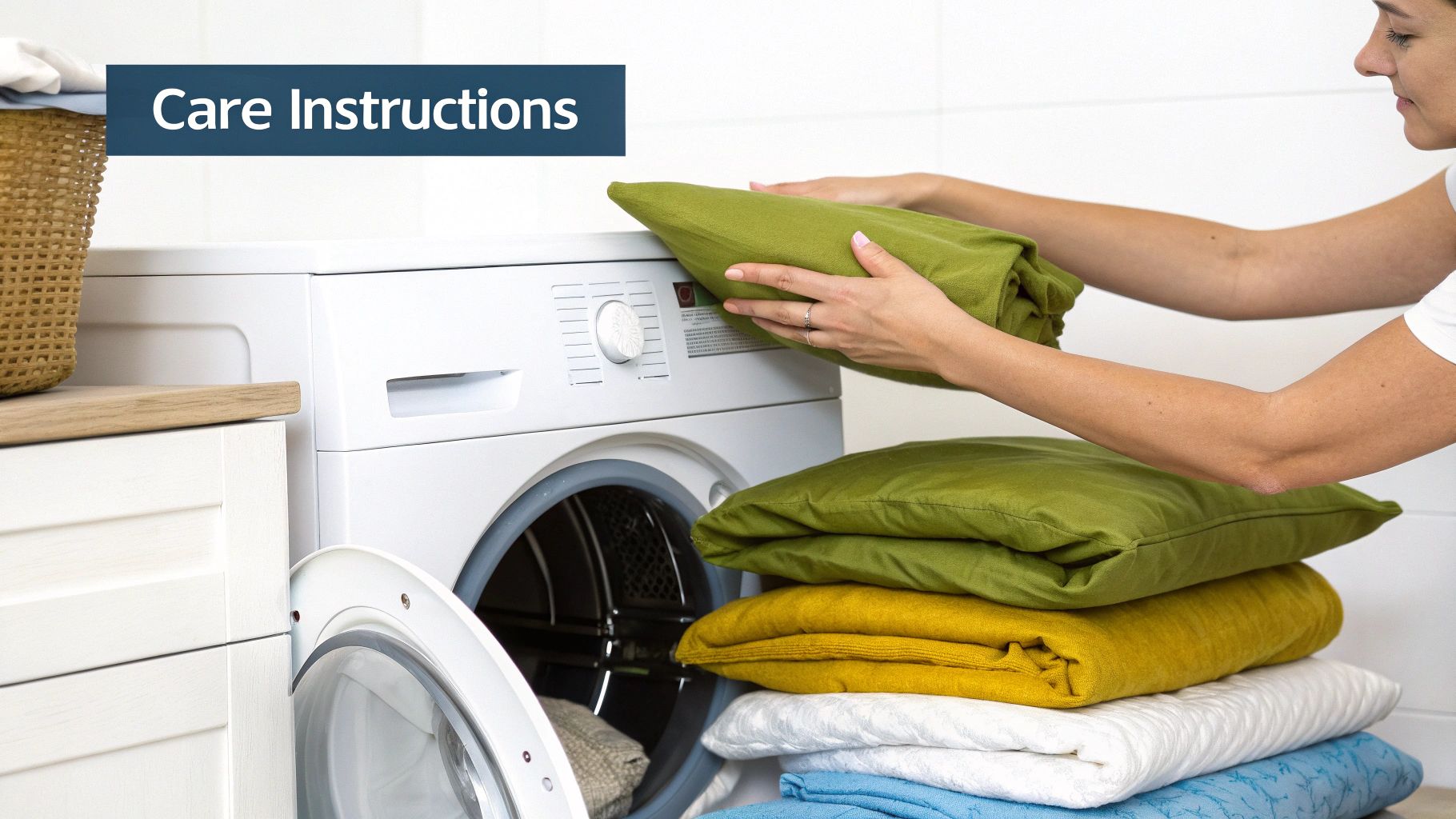
You’ve invested in the perfect pillow cases to upgrade your sleep; now make that feeling last. Proper care is the secret to keeping them soft, vibrant, and feeling like new. It's easier than you think.
For your everyday cotton and linen pillow cases, a simple warm wash is perfect. Tumble dry them on low heat to prevent shrinking and protect the fabric's integrity. With linen, this simple routine actually makes it even softer over time.
Gentle Care for Delicate Fabrics
When you're dealing with luxury materials like silk or satin, a little extra attention ensures they maintain their signature smoothness and sheen. Follow these simple rules to protect your investment.
- Cool Water is Key: Always wash silk and satin on a delicate cycle using cool water.
- Use a Mild Detergent: Harsh chemicals are the enemy. Stick to a pH-neutral soap.
- Air-Dry When Possible: The best way to protect the color and fibers is to hang them to dry away from direct sunlight.
Proper washing doesn't just clean your bedding; it preserves the incredible feel you paid for. Protecting your investment means you get to enjoy cloud-like softness, night after night.
Taking these simple steps ensures every night feels as luxurious as the first. For more tips, check out our guide on how to keep clothes soft for long-lasting comfort.
A Few Final Questions
Let's clear up a few final questions so you can make your choice with total confidence and upgrade your sleep tonight.
How Often Should I Be Changing My Pillow Case?
For optimal skin hygiene, change your pillowcase every two to three days. This prevents the buildup of oils and sweat that can cause breakouts. If you have sensitive or acne-prone skin, don't hesitate—switch to a fresh one every single day. It's a simple habit with a powerful impact.
Is a Silk or Satin Pillow Case Better for My Hair?
Both are excellent for reducing friction, which means less breakage and fewer tangles. The choice comes down to material and budget.
Silk is a natural, hypoallergenic, and breathable protein fiber—it’s the premium choice for maximum skin and hair benefits. Satin is a weave, usually made from synthetics like polyester, that delivers the same silky-smooth feel at a more accessible price point.
For the ultimate in natural luxury and beauty benefits, silk is the undisputed winner. But if you want a budget-friendly option that still delivers that smooth glide, satin is a fantastic and effective choice.
Does Thread Count Really Matter for Pillow Cases?
Yes, but it's not the most important factor. While a higher thread count often indicates a softer fabric, the quality of the fiber is what truly matters. A 400-thread-count pillowcase made from premium, long-staple cotton will feel far more luxurious than a 1000-thread-count case made from cheap, short-staple fibers. Prioritize fiber quality over thread count every time.
Ready to stop dreaming about better sleep and actually experience it? Explore the full collection of irresistibly soft homewear at TeddyPaws and discover the perfect pieces to elevate your relaxation. Shop now at https://teddypaws.co and give yourself the comfort you deserve tonight.

